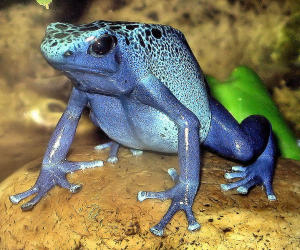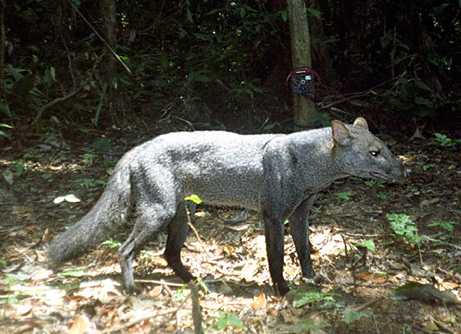Where Should You Go Looking For Cryptids?
Posted by: Loren Coleman on July 26th, 2011
Have you ever thought about the fact that most people are looking in the wrong places for cryptids? If you want to find new species of primate, you have to travel to California, Oregon, Washington State, or British Columbia, right? That’s the brainwashing that you’ve heard, correct?
The misdirection is all about the media feeding the frenzy for the “celebrity cryptids”: Bigfoot (Sasquatch), Loch Ness Monsters (Nessies), and Abominable Snowmen (Yetis).
Research models, however, show that it is not the Pacific Northwest, Loch Ness, nor the Himalayas where expeditions should be mounted to find new species.
Most of the world’s “missing” or undiscovered species live in regions already identified by scientists as conservation priorities, according to a new study published in the journal Proceedings of the National Academy of Sciences….Six regions already identified by conservation scientists as hotspots — Mexico to Panama; Colombia; Ecuador to Peru; Paraguay and Chile southward; southern Africa; and Australia — were estimated by the models to contain 70 percent of all predicted missing species. Only two regions with high estimates of missing species — the region from Angola to Zimbabwe, and the northern Palearctic, which encompasses parts of Europe and Asia — contained no biodiversity hotspots. Source.
Those doing this research know that it is uphill struggle.

Blue poison dart frog Dendrobates azureus at Bristol Zoo, England. (Credit: Adrian Pingstone, public domain.)
“We know we have an incomplete catalogue of life,” says lead author Lucas Joppa of Microsoft Research in Cambridge, U.K., who received his PhD in ecology from Duke in 2009. “If we don’t know how many species there are, or where they live, then how can we prioritize places for conservation? What if the places we ignore now turn out to be those with the most unknown species?”
…
“How can you save a species you don’t even know exists?” asks Joppa. “You can’t. But you can protect places where you predict they occur.”

The rare short-eared dog.
While most people want to “protect” Bigfoot, of course, they sometimes forget you can’t protect something that has not been established as being a verified species.

New species of bat discovered on St. Vincent.
About Loren Coleman
Loren Coleman is one of the world’s leading cryptozoologists, some say “the” leading living cryptozoologist. Certainly, he is acknowledged as the current living American researcher and writer who has most popularized cryptozoology in the late 20th and early 21st centuries.
Starting his fieldwork and investigations in 1960, after traveling and trekking extensively in pursuit of cryptozoological mysteries, Coleman began writing to share his experiences in 1969. An honorary member of Ivan T. Sanderson’s Society for the Investigation of the Unexplained in the 1970s, Coleman has been bestowed with similar honorary memberships of the North Idaho College Cryptozoology Club in 1983, and in subsequent years, that of the British Columbia Scientific Cryptozoology Club, CryptoSafari International, and other international organizations. He was also a Life Member and Benefactor of the International Society of Cryptozoology (now-defunct).
Loren Coleman’s daily blog, as a member of the Cryptomundo Team, served as an ongoing avenue of communication for the ever-growing body of cryptozoo news from 2005 through 2013. He returned as an infrequent contributor beginning Halloween week of 2015.
Coleman is the founder in 2003, and current director of the International Cryptozoology Museum in Portland, Maine.










Follow the science. People tend to shrug off mathematical models and other tools, in favor of what they consider intuitive solutions. If implemented properly, numbers can do a lot of the dirty work for us.
“How can you save a species that you don’t know exists?”
That’s a darn good question. Protecting the areas where they will most likely be is a good start, but nothing says conservation like a species recognition i.e. a body/parts of a body/live specimen. You have the animal, you have access to information about it, therefore you can better protect it. You need a type specimen for that kind of specific conservation knowledge.
Its kind of interesting how well this study fits with major crypto-zoological discoveries of the past century and more recently: From Komodo Dragons to Gorillas and Okapis, to Giant African forest hogs, Giant Muntjacs and the Saola, the Luzon Lizard, and Bili/Bondo giant chimps, most big animal species recently discovered have been in tropical environments. If someone is looking for large bigfoot-type monsters, perhaps the best place to look is in places like southeast Asia, South America, Africa, etc? This is not to say such cryptid legends like Sasquatch don’t exist: its just that, given the discovery record, those types of beings are more likely to be found in tropical environments than in far northern latitudes.
Move over Bigfoot and Nessie: say hellow to Vasitri and Sucuriju Gigante?